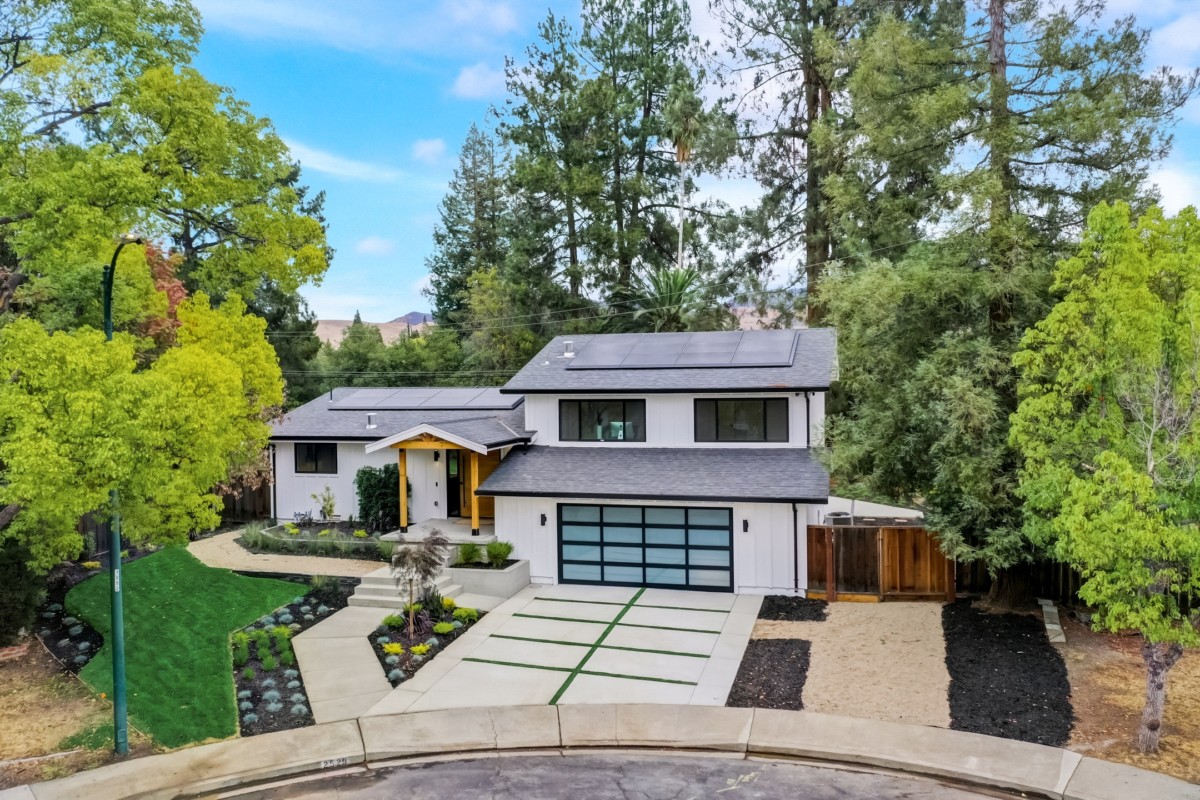Learning how to stage your home to sell can make a major difference in how quickly your listing grabs attention and closes a deal. Staging goes beyond basic cleaning—it’s about creating a space where buyers can instantly see themselves living.
Whether you’re selling your home in Rock Hill or Southaven, this Redfin article will walk you through smart, effective staging strategies that can highlight your home’s best features, minimize distractions, and help your listing stand out and sell faster.
In this article:
What is home staging?
Why is home staging important?
5 tips for staging a house to sell
Choosing the home staging option that fits your needs
Is staging a home worth the investment? Cost vs. ROI
Common staging mistakes to avoid
How to stage your home to sell: Final touches
How to stage your home to sell FAQs
What is home staging?
Home staging is the process of preparing and styling your home to appeal to the widest range of potential buyers by cleaning, decluttering, and styling your space.
When done right, staging helps buyers imagine their future in your home. It highlights your home’s best features, downplays any flaws, and makes every room feel purposeful and welcoming. Staging isn’t just about making a home look nice—it’s about creating an emotional connection.
As the experts at Beyond the Box Interiors share, “The best home staging should make you rethink selling your home.”
Why is home staging important?
While not required, home staging is one of the most effective ways to make your home stand out—and it often leads to faster sales and better offers.
In fact, staged homes often sell faster and for more money than their unstaged counterparts. And in today’s competitive market, those extra days and dollars can make all the difference.
5 tips for staging a house to sell
Not every room needs a full makeover, but focusing on key areas can make a big impact. Prioritize the spaces that buyers notice first and remember most.
1. Begin with curb appeal
First impressions begin at the curb, and buyers often make snap judgments before they even walk through the front door. A clean, well-kept exterior sets the tone for everything that follows.
Easy curb appeal upgrades:
- Add fresh mulch and low-maintenance plants around walkways and foundations
- Repaint or replace house numbers, mailboxes, and light fixtures for a cohesive look
- Power-wash the siding, front steps, and driveway
- Hide trash bins, hoses, tools, and lawn gear
- Touch up or seal coat the driveway if needed
- Place a new doormat and potted plants by the entry
Pro tip: Amy Bly of Great Impressions Home Staging recommends replacing outdated mailboxes and making sure all exterior elements match your home’s color scheme.
2. Touch up the living areas
Buyers gravitate toward the living room. A well-staged living area should feel spacious, inviting, and functional, helping buyers imagine themselves relaxing or entertaining there.
Tips for staging living areas:
- Declutter and remove personal items like family photos
- Deep clean floors, furniture, rugs, and windows
- Arrange furniture to create natural conversation areas and maximize space
- Use neutral, light-colored throws and pillows
- Add a few tasteful accessories like a vase, books, or artwork without overcrowding
- Ensure good lighting—use a mix of natural light, lamps, and overhead fixtures
3. Clean the kitchen and bathrooms
Kitchens and bathrooms are among the most important rooms buyers scrutinize—they want to see clean, functional, and updated spaces. Staging these areas effectively can highlight their potential and make your home feel move-in ready.
Kitchen and bath staging tips:
- Clean everything—counters, sinks, faucets, grout, and appliances
- Remove all personal items, magnets, and excessive décor
- Organize cabinets and drawers to appear spacious and tidy
- Add fresh towels, a bowl of fruit, or a small vase of flowers
- Use neutral colors and consider updating hardware if outdated
- Ensure good lighting and replace burnt-out bulbs
- Fix any leaks, grout issues, or minor damages before showings
4. Organize the bedrooms
Bedrooms are personal retreats, so staging them to feel calm, cozy, and clutter-free. Focus on simplicity and comfort while keeping the decor neutral and inviting.
Bedroom staging tips:
- Use neutral bedding with a few coordinating pillows or throws
- Clear surfaces of nightstands and dressers
- Remove family photos or personal items that might distract buyers
- Arrange furniture to maximize space and flow
- Open curtains or blinds to let in natural light
- Organize closets to appear spacious—buyers often peek!
- Keep flooring clean and add a soft rug to define the space if needed
5. Don’t overlook the flooring
Clean, well-maintained floors can make spaces look fresh and move-in ready, while worn or damaged flooring can be a major turnoff.
Flooring staging tips:
- Deep clean carpets or hire a professional to remove stains and odors
- Repair or replace any torn, frayed, or damaged carpet sections
- Refinish hardwood floors if they’re scratched or dull
- Ensure tile and grout are clean and free of mildew
- Use rugs to add warmth and define spaces, but avoid overly small or dated ones
- Fix squeaky floorboards or loose tiles

Choosing the home staging option that fits your needs
When it comes to staging your home, there’s no one-size-fits-all approach. Your budget, timeline, and the condition of your home all play a role in deciding how much help you need—and how much staging makes sense.
Read>> How Much Does it Cost to Stage a House?
1. DIY staging
If you’re willing to put in some time and effort, DIY staging is the most budget-friendly route. It involves cleaning, decluttering, rearranging furniture, and adding neutral, inviting accents.
Best for: Sellers on a tight budget or those with a good eye for design.
Pros
- Low cost
- Full control
- Can use what you already own
Cons
- Time-consuming
- May lack a professional and polished finish
2. Agent-assisted staging
Many real estate agents offer basic staging help or guidance as part of their services. Some even have staging props or a network of professionals they can refer to. This is a middle ground option—more hands-on than DIY, but usually less expensive and involved than hiring a full professional staging service.
Best for: Sellers who want guidance but prefer not to hire a separate staging professional .
Pros
- Sometimes included in your listing package
- Professional staging advice without the extra cost
Cons
- May be limited in scope and inventory
3. Professional home staging
This is the most hands-on and visually impactful option. A professional stager evaluates your home, develops a plan, and brings in furniture, artwork, lighting, and accessories to elevate every space.
Best for: Vacant homes, luxury listings, or sellers who want to maximize market appeal.
Pros
- High-impact results
- Proven to attract buyer interest
- Custom tailored to your space
Cons
- Can cost $600 to $4,000
- Potential storage fees for your own furniture
4. Virtual staging
Virtual staging uses digital tools to add furniture and design elements to enhance online listing photos.
Best for: Sellers with empty properties looking to save money.
Pros
- Budget-friendly
- Enhances online appeal
Cons
- No in-person impact
- Must be disclosed as digitally altered
5. Live-in staging
Live-in staging allows sellers to present a clean, appealing home while continuing to live in it during the selling process.
Best for: Sellers who can’t vacate the home before listing but still want to make a strong impression.
Pros
- Cost-effective—no need to rent furniture or vacate
- Emphasizes your home’s livability
- Easy to maintain
Cons
- Requires daily upkeep to stay show-ready
- Harder to keep spaces depersonalized
- Can feel disruptive to daily routines
Is staging a home worth the investment? Cost vs. ROI
One of the biggest questions sellers have is whether staging is worth the investment. While staging does come with upfront costs—whether you’re doing it yourself or hiring professionals—the potential return on investment (ROI) can be significant.
Cost vs. ROI: what the data shows
- Average ROI: Investing about 1% of your home’s asking price in staging can yield an average return of 7.1% over the list price.
- Increased sale price: Homes that are staged typically sell for 5% to 15% more than their unstaged counterparts.
Faster sales: Staged homes sell 73% faster than non-staged homes, with staged properties spending an average of 18 days on the market compared to 49 days for non-staged homes. - Buyer attraction: 40% of buyers are more inclined to visit a staged home they found online.
Factors influencing cost vs. ROI
- The local real estate market: Competitive markets may need less staging.
- Home condition: Staging can highlight your home’s strengths and minimize flaws compared to comps in the area.
- Budget: Consider the costs of professional staging versus DIY efforts.
- Selling timeline: Staging can expedite the process by making your home more appealing to buyers.
- Negotiation: A well-staged home can lead to higher offers and more negotiating power.

Common staging mistakes to avoid
While staging can make a big impact, it’s easy to go overboard or overlook important details. Avoid these common mistakes to ensure your staging efforts actually help—not hurt—your sale.
1. Over-staging
Too much staging can feel artificial and make buyers wonder what you’re trying to hide. Overdoing it with trendy décor, excessive accessories, or showroom-style arrangements can make a home feel less livable.
Keep it simple, natural, and balanced—the goal is to enhance the home, not distract from it.
2. High-end splurging
You don’t need to spend thousands on luxury furniture or brand-new décor. High-end purchases rarely guarantee a return and may not align with the value of your home or local market.
Focus on clean, updated, and neutral touches—a few smart updates go further than big-ticket splurges.
3. Fix up any miscellaneous repairs
Staging won’t cover up squeaky doors, chipped paint, or dripping faucets and you can guarantee that buyers will notice. Small issues can send the message that the home hasn’t been well maintained. Before staging, walk through your home like a buyer would and take care of any minor improvements.
Pro tip from Premiere Home Staging + Design: “Take care of small repairs you can do yourself—leaky faucets, cracked tiles, damaged screens, and burned-out bulbs. These details matter.”
How to stage your home to sell: Final touches
Once your home is cleaned, decluttered, and styled, it’s time to focus on the little details that leave a big impression. Open the curtains to let in natural light, fluff the pillows, straighten the rugs, and do one last wipe-down of surfaces.
With thoughtful prep and attention to detail, you can create a space that invites buyers to fall in love the moment they walk through the door.
How to stage your home to sell FAQs
Is it better to sell a house empty or staged?
Staged homes almost always show better than empty ones. Staging helps buyers visualize how to use the space, makes rooms feel larger and more inviting, and creates an emotional connection. An empty house can feel cold and highlight flaws, while a well-staged one helps buyers imagine it as their future home. So, in most cases, staged is better.
What are the most important rooms to stage when selling a house?
Focus on the living room, primary bedroom, and kitchen. These are the areas buyers pay the most attention to, and staging them well can make your entire home feel more inviting.
What’s the difference between decorating and staging?
Decorating reflects your personal style, while staging is about appealing to a broad range of buyers. Staging neutralizes the space so others can picture themselves living there.
Can I stage my home myself, or do I need to hire a pro?
You can absolutely stage your home yourself if you’re up for the task. Start by decluttering, cleaning thoroughly, and using neutral colors. If you want a more polished look, hiring a professional may be worth the investment.



















 English (US) ·
English (US) ·